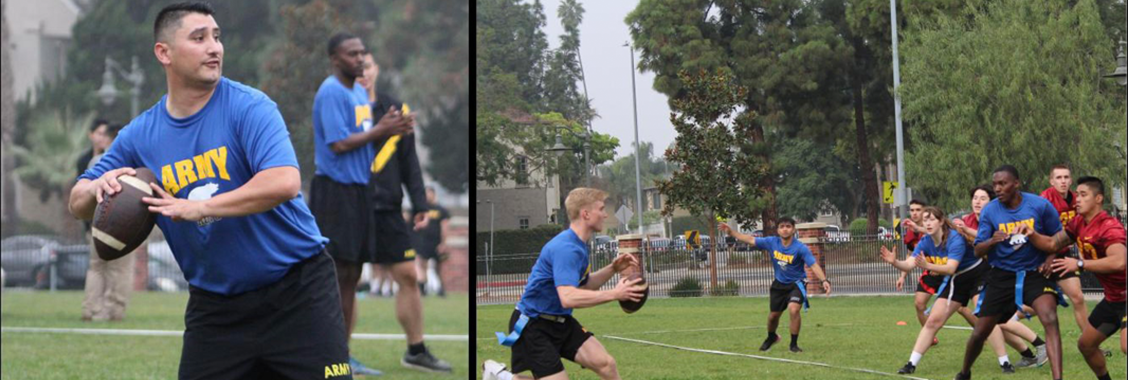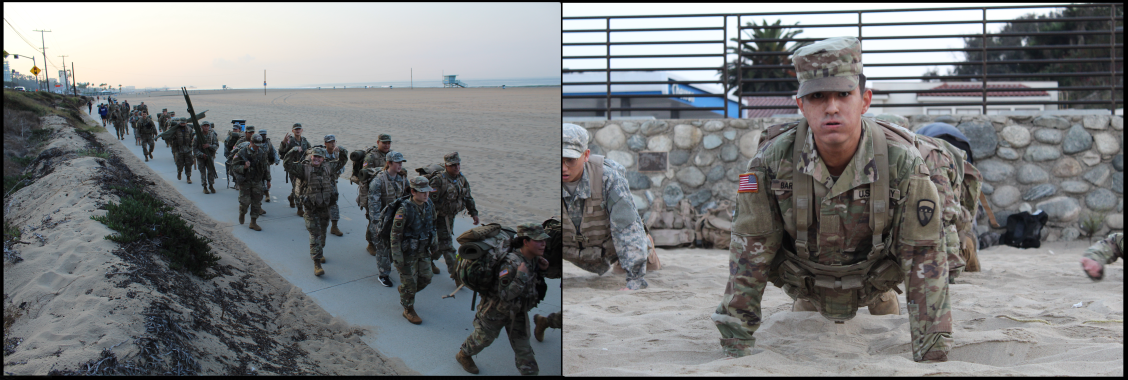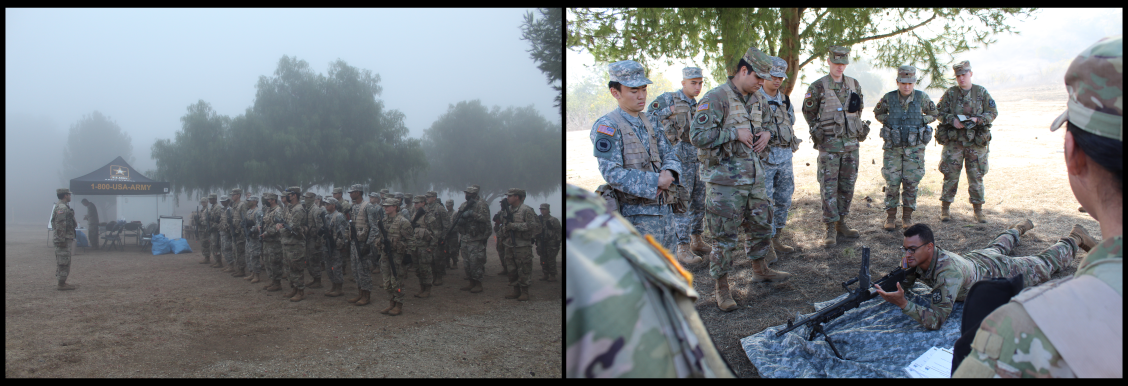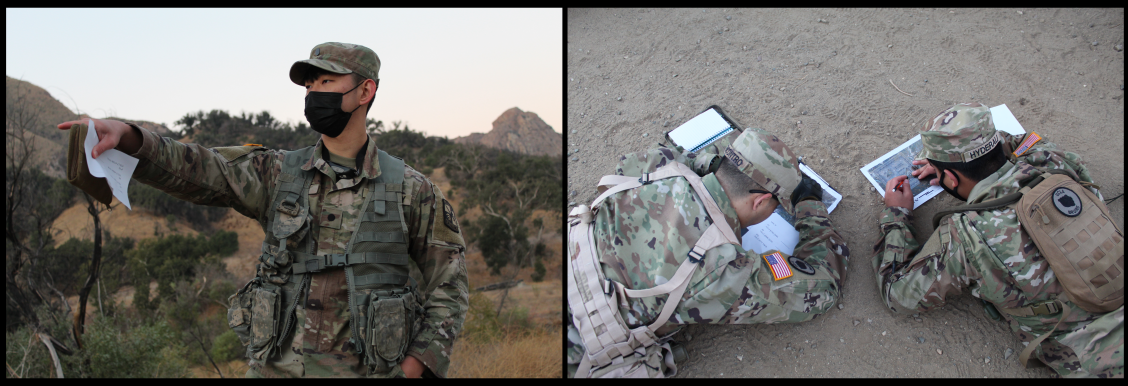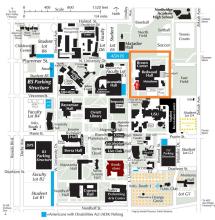What is Advanced Camp?
Advanced Camp. Advanced Camp is a 31-day training event that is designed to assess a Cadet’s ability to demonstrate proficiency in basic officer leadership tasks. Cadets are evaluated on their ability to lead at the Squad and Platoon levels, both in garrison and tactical environments. Cadets are mentally and physically tested during a 12-day consequence driven field training exercise that replicates a combat training center rotation. Successful completion of the Advanced Camp is a prerequisite for commissioning.
The mission of Advanced Camp is to assess a Cadet’s potential to serve as a commissioned officer. It is the most significant training and evaluation event in ROTC. Training is complex, challenging, and rigorous and is conducted in a stressful training environment. Cadets reinforce basic skills through squad (9-13 Cadets) level leader development exercises, and transition to platoon (40-50 Cadets) level operations in a company construct. Prior to attending Advanced Camp, Cadets receive intelligence updates, preparing them for the geo-political environment to which they will deploy and operate.
Advanced Camp is divided into five phases:
Phase I (Reception, Staging & Onward Movement)
Consists of senior leader briefs, physical readiness training, cognitive exams, the 'Road to War' briefs, and rules of engagement (ROE) – all necessary for a successful mission.
Phase II (Integration)
Focuses on team building that occurs through the physical training, Field Leaders' Reaction Course (FLRC), basic skills reinforcement in squad level exercises, land navigation, rifle marksmanship, confidence course/rappelling, counter-IED (improvised explosive device) training, and cross cultural competencies.
Phase III (Deployment)
The deployment phase transitions the Cadet platoons from rehearsing Soldier tasks and battle drills into platoon-level exercises against a fully resourced, 'near peer' opposing force (OPFOR).
Phase IV (Recovery)
The deployment phase transitions the Cadet platoons from rehearsing Soldier tasks and battle drills into platoon-level exercises against a fully resourced, 'near peer' opposing force (OPFOR).
Phase V (Redeployment & Reintegration)
Cadets receive a Cadet Officer Evaluation Report (COER), discuss successes and opportunities for their final year of ROTC, graduate, and redeploy to their homes.
Below are some highlights:
RECONDO Badge
The RECONDO badge is awarded to Cadets who display superior skills at Advanced Camp. They must exceed the standards in APFT, confidence courses, land navigation, marksmanship, first aid, CBRN, and the 12-mile foot march.
Army Combat Fitness Test (ACFT)
The Army Combat Fitness Test (ACFT) provides an accurate assessment of each Cadet's fitness level. The Cadets receive a calibrated assessment of their ability to pass the Army Combat Fitness test consisting of 6 events. It includes a 3-repetition maximum deadlift, standing power throw, hand release push-ups, sprint-drag-carry, plank, and a 2-mile run.
Land Navigation
The land navigation training outcomes develop, assess and train Cadets in basic dismounted land navigation skills. Cadets demonstrate their ability to perform basic land navigation skills during day and night conditions on a verified course in varied terrain. Cadets are also taught advanced land navigation skills and associated tasks, which include mounted land navigation, range estimation, terrain analysis, and call for fire.
Confidence Training
This includes rappel training, the slide for life, log walk/rope drop, and confidence and obstacle courses. Confidence training is designed to challenge the Cadets' physical courage, build confidence in personal abilities, and help them overcome fear. At the rappelling site, each Cadet executes one 70-foot rappel and several 37-foot rappels. Cadets demonstrate confidence in their ability to overcome fear of heights by executing the confidence/obstacle course, log walk/rope drop and slide for life.
Basic Rifle Marksmanship (BRM)
The Basic Rifle Marksmanship (BRM) training familiarizes Cadets with select US weapons, capabilities and employment techniques. Cadets receive training in order to conduct zero/qualification with the M4/M16A2 rifle, to gain confidence in their assigned weapon and in their training by engaging targets on the range. After a Cadet has qualified on his or her assigned weapon, upon completion of all BRM training. Cadets are prepared for future collective training and have confidence in their weapon systems.
First Aid
Cadets are trained on selected first aid tasks. By the end of the training, each Cadet is capable of applying life-saving first aid techniques to ensure battle buddy survivability on the modern battlefield. Instructors utilize training aids and resources to teach and test to the Combat Lifesaver standard on the following tasks: evaluate a casualty, airway management, CPR, chest wounds, control bleeding and treat for shock. The Cadets also participate in a squad level situational exercise that incorporates administering first aid in a tactical setting. Cadets gain an understanding that every Soldier, regardless of rank, must be able to administer aid to their fellow Soldier.
Field Leader's Reaction Course
FLRC is designed to develop and evaluate leadership, and to build teamwork early in the training cycle. Course administration is accomplished using the established Cadet organization and chain of command. Cadet leadership potential is assessed by cadre that are certified as observer, controller, trainers or OCTs. Cadets are provided the opportunity to get early feedback on their leadership strengths, weaknesses, styles and techniques from the OCTs.
Chemical, Biological, Radiological & Nuclear (CBRN)
Cadets are trained on CBRN tasks to develop confidence in the U.S. Army's protective mask and chemical protective clothing. Cadets learn to correctly wear, operate and build confidence in their CBRN clothing and equipment. Cadets will gain an understanding of the leadership challenges and constraints associated with operating in a CBRN environment. The culminating experience at CBRN is exposure to the effects of live tear gas in the CBRN gas chamber.
| Tactics Training In the first block of tactics instruction, Cadets learn individual battlefield skills, movement formations, techniques and procedures necessary for subsequent tactical training at the squad level. Small unit tactical training is a vehicle to teach and evaluate leadership. It introduces conditions of stress that parallel those found in combat. Tactical training introduces new skills, provides performance-oriented reinforcement opportunities and increases the degree of difficulty and sophistication of training events. Cadets learn the skills necessary to function in a tactical training area. This building-block approach provides he best opportunity for Cadets to learn and for Cadre to assess their leadership potential. |
Outcomes for Advanced Camp include:
- Assessing organizational capabilities and limitations to increase team cohesion and operational effectiveness
- Developing agile and adaptive leaders that solve problems and thrive in ambiguous, complex operating environments
Cadet Professional Development Training (CPDT)
The CPDT Program consists of six general categories of leadership experiences designed to further develop Cadets, provide them with an introduction to the “real” Army and in some cases, provide them with functional skill qualifications. The six categories of training are summarized below.
Cadet Troop Leader Training (CTLT)
More than 1,100 MS III Cadets participate in this program which allows them to serve with active duty Army units as Platoon Leaders.
Advanced Camp OPFOR
Approximately 1,300 Cadets participate in this program that provides an in-depth tactical experience for Basic Course Cadets. The AC OPFOR program is approximately 30-days in length and allows Cadets to test their leadership abilities at the Fire Team and Squad levels from troop leading procedures to tactical operations against Advanced Camp Squads and Platoons.
Cadet Advanced Individual Training (CAIT)
Approximately 1,300 Cadets participate in this program which allows them to attend functional qualification and other courses, some of which result in the award of skill badges. Some of the courses include: Airborne, Air Assault, Mountain/Northern Warfare, Sapper, and the Combat Diver Qualification Course among others as well as United States Military Academy (USMA) Cadet Field Training (CFT).
Internships
Internships offer over 500 opportunities for Cadets who seek additional training in specialized areas such as scientific application, engineering, nursing, medicine, intelligence, and cyber applications based on hosting organizations requests. Examples of available internships include the US Army Corps of Engineers (EIP), MIT Lincoln Lab Internship (MITLL), Museum Internship Program (MIP), the National Security Agency (NSA), Communication, Electronics, Research Development and Engineering Center (CERDEC), and Army Medical Department (AMEDD) as well as opportunities at West Point, the FBI and US Congress.
Cultural Understanding and Leadership Program (CU&LP)
This program serves to improve Cadet cultural awareness through the complete immersion in another culture. More than 1,000 Cadets divided into 100 teams participate in this program that consists of a series of month-long, group deployments that support Combatant Command (CCMD) security cooperation lines of effort. Cadet Command currently sends these teams to 26 different countries.

